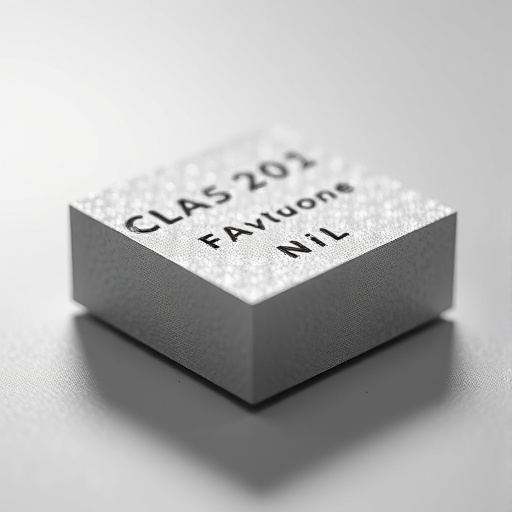In the ever-evolving landscape of renewable energy technologies, microbial fuel cells (MFCs) stand out as a compelling solution for generating electricity through the metabolic activity of microorganisms. Recent advancements in this field have highlighted the potential of porous Fe–Ni alloys, which demonstrate remarkable promise as anodes in microbial fuel cells. An innovative study led by Liu, Guo, and Duan delves into the composition optimization and intrinsic electrochemical properties of these alloys, revealing vital insights that could pave the way for enhanced MFC efficiency.
The rising demand for sustainable energy solutions has intensified research into MFCs, which convert biochemical energy from organic matter into electrical energy. Central to the performance of these systems are the anodes, which must facilitate effective electron transfer from microbes to the electrode surface. However, conventional materials often fall short in terms of electrochemical performance and long-term stability. This has led researchers to explore alternative compositions and structures that could improve the overall efficiency of MFCs.
Porous Fe–Ni alloys stood out as candidates for MFC anodes due to their promising electrochemical properties and abundance. These alloys not only offer a unique combination of mechanical strength and conductivity but also encourage the growth of biofilms, which are essential for optimal microbial activity. Liu and colleagues undertook a systematic investigation into the optimization of alloy composition, aiming to enhance the electrochemical characteristics necessary for efficient energy harvesting.
The study employed advanced techniques to analyze the intrinsic electrochemical properties of various Fe–Ni alloy compositions. Characterization methods such as cyclic voltammetry and electrochemical impedance spectroscopy were utilized to evaluate the redox behavior and charge transfer capabilities of the alloys. These techniques provided deeper insights into how composition variations affect the electrochemical performance, leading to the identification of the most efficient configurations.
A significant finding from this research was the role of porosity in the alloys. By adjusting the manufacturing processes, the team was able to create alloys with controlled pore structures, which increased the effective surface area available for microbial colonization and electron transfer. This was a breakthrough in understanding how structural properties could be manipulated to enhance the performance of MFCs.
Furthermore, the researchers conducted electrochemical screening of the optimized Fe–Ni alloy compositions to ascertain their suitability for real-world applications. The screening involved subjecting the alloys to various microbial cultures to simulate the conditions inside a typical microbial fuel cell. This step was crucial in verifying the alloys’ performance in an environment closely mirroring operational conditions.
Results indicated that specific compositions of the porous Fe–Ni alloys not only exhibited superior conductivity but also showed enhanced biocompatibility. This was evidenced by the increased current outputs observed during the tests, with certain alloy formulations generating significantly higher levels of energy than traditional electrode materials. These developments suggest that using engineered alloys could lead to more efficient and cost-effective MFC systems.
Moreover, the research addressed the longevity and stability of the alloys under continuous operation. This aspect is critical for practical applications of MFC technology, as many materials tend to degrade over time, leading to reduced performance. The findings demonstrated that the optimized alloys maintained their electrochemical activity over extended periods, a testament to their durability and potential for long-term deployment.
The implications of this study extend beyond microbial fuel cells. The knowledge gained from optimizing the composition of Fe–Ni alloys may have applications in other electrochemical devices, such as batteries and supercapacitors. This cross-disciplinary relevance enhances the value of the research, positioning it at the forefront of energy materials science.
In conclusion, the work by Liu, Guo, and Duan signifies a promising advancement in the field of microbial fuel cells. By optimizing the composition of porous Fe–Ni alloys and screening their electrochemical characteristics, they have opened new avenues for enhancing the efficiency of energy generation from organic waste. As research continues to unfold, the potential for these findings to transform MFC technology—and renewable energy generation more broadly—remains immense, suggesting that we are on the cusp of a new era in sustainable energy solutions.
The study serves as a reminder of the importance of material science in the transition towards renewable energy. With the ongoing refinement of alloy compositions and their respective properties, it is likely that we will see an increase in the viability and efficiency of microbial fuel cells. This research not only contributes to our understanding of electrochemical systems but also emphasizes the significance of innovative materials in addressing the energy challenges of the future.
As the global community pivots towards sustainable practices, the insights garnered from the development of these Fe–Ni alloys may spur wider adoption and integration of microbial fuel cells into our energy infrastructure. The potential for MFCs to utilize waste as a renewable energy source positions them as an attractive solution in a world hungry for cleaner energy alternatives.
Subject of Research: Optimization of porous Fe–Ni alloys for microbial fuel cells
Article Title: Composition optimization and intrinsic electrochemical screening of porous Fe–Ni alloys as potential anodes for microbial fuel cells.
Article References: Liu, D., Guo, L., Duan, R. et al. Composition optimization and intrinsic electrochemical screening of porous Fe–Ni alloys as potential anodes for microbial fuel cells. Ionics (2025). https://doi.org/10.1007/s11581-025-06741-z
Image Credits: AI Generated
DOI: https://doi.org/10.1007/s11581-025-06741-z
Keywords: electrochemical properties, microbial fuel cells, Fe–Ni alloys, energy generation, renewable energy, biodegradable materials, optimization, electrochemical screening, biofilm growth, conductivity, stability, energy efficiency, sustainable technology, material science.
Tags: alternative materials for energy conversionbiofilm growth on anodeseffective electron transfer in MFCsenhancing electrochemical performance in renewable energyFe–Ni alloys for microbial fuel cellsintrinsic properties of Fe–Ni alloysmicrobial fuel cell efficiency improvementsoptimizing anode materials for MFCsporous alloys in energy applicationsrenewable energy technologies advancementsresearch on sustainable anode materialssustainable energy solutions with MFCs





